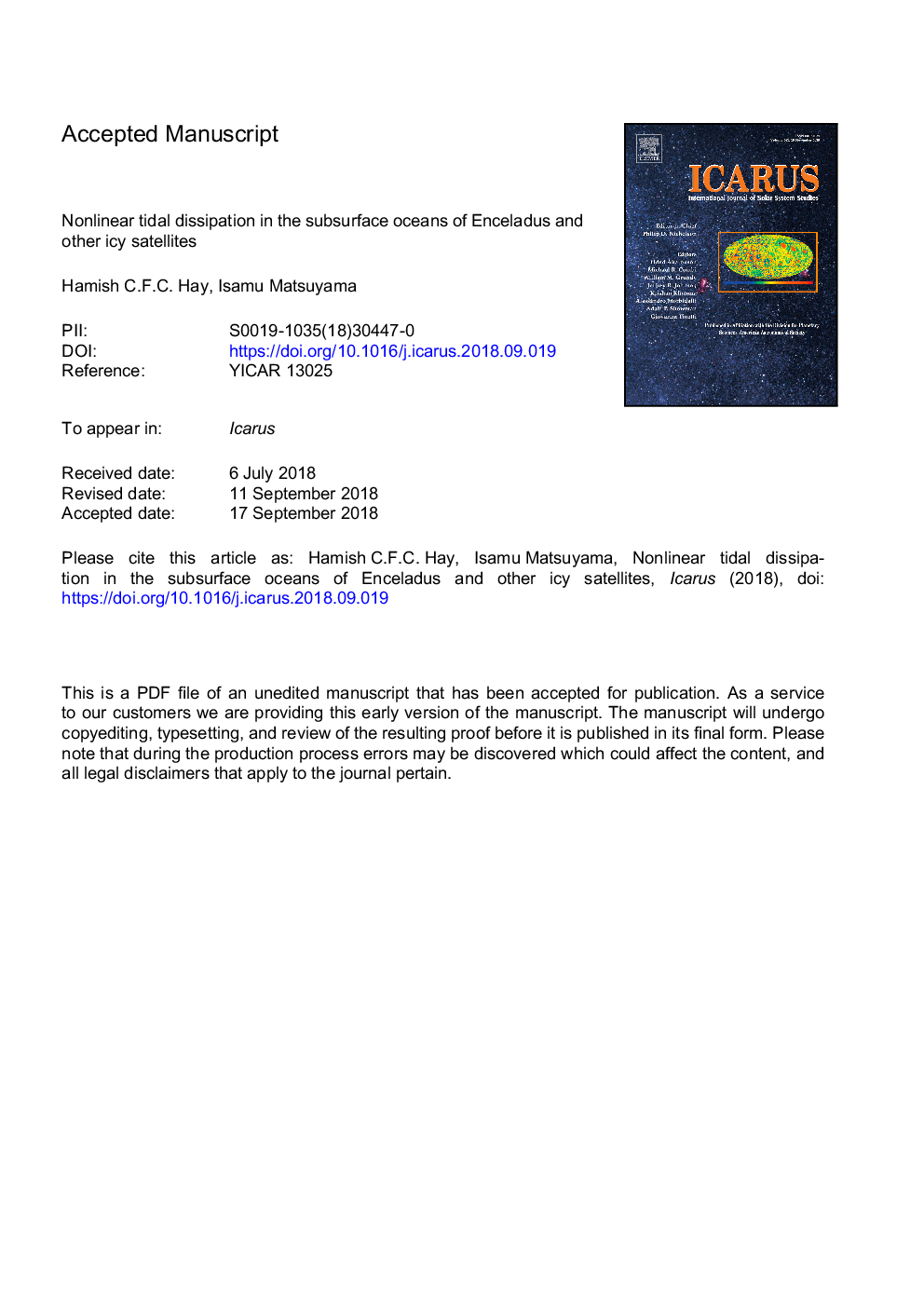| کد مقاله | کد نشریه | سال انتشار | مقاله انگلیسی | نسخه تمام متن |
|---|---|---|---|---|
| 10156429 | 1666392 | 2019 | 47 صفحه PDF | دانلود رایگان |
عنوان انگلیسی مقاله ISI
Nonlinear tidal dissipation in the subsurface oceans of Enceladus and other icy satellites
ترجمه فارسی عنوان
تخریب جزر و مدی غیر خطی در اقیانوس زیرزمینی انسلادوس و دیگر ماهواره های یخی
دانلود مقاله + سفارش ترجمه
دانلود مقاله ISI انگلیسی
رایگان برای ایرانیان
کلمات کلیدی
ماهواره ها، جزایر اقیانوس، انسلادوس، اروپا، تریتون،
موضوعات مرتبط
مهندسی و علوم پایه
علوم زمین و سیارات
علوم فضا و نجوم
چکیده انگلیسی
Subsurface ocean tides act as a mechanism to dissipate tidal energy in icy satellite interiors. We numerically model the effect of an ice shell on ocean tides using non-linear bottom drag for the first time. We demonstrate that subsurface oceans experience tidal pressurization due to the confining nature of the ice shell, and find that Enceladus' eccentricity forcing can generate up to 2.2Â kPa of pressure excess at the ocean surface. Existing free-surface oceanic energy dissipation scaling laws are extended to subsurface oceans, and are benchmarked against our numerical results to within 10 %. We show that for the large bodies Ganymede, Europa and Titan, an ice shell increases eccentricity tidal heating due to self-gravity, whereas the shell's suppressive mechanical forcing reduces eccentricity tide dissipation on Enceladus and Dione by several orders of magnitude due to their high effective rigidities. In contrast, the ice shell enhances obliquity-forced dissipation in all satellites investigated, except Triton, because the largely divergence-free ocean response is unaffected by the shell's rigidity but is still enhanced by self-gravity. We conclude that the fundamental difference in ocean response to obliquity and eccentricity forcing, combined with self-gravity, results in increased obliquity heating and suppressed eccentricity heating in small satellites. For large satellites with low effective rigidities, the type of ocean response is less important because the shell's mechanical forcing has little impact on the flow, whereas self-gravity will enhance the response, and consequently dissipation, regardless of the forcing. Overall, obliquity tides are likely to dominate the tidal heating budget of icy satellite oceans, remaining the most prominent source of fluid dissipation in subsurface barotropic ocean tides.
ناشر
Database: Elsevier - ScienceDirect (ساینس دایرکت)
Journal: Icarus - Volume 319, February 2019, Pages 68-85
Journal: Icarus - Volume 319, February 2019, Pages 68-85
نویسندگان
Hamish C.F.C. Hay, Isamu Matsuyama,
